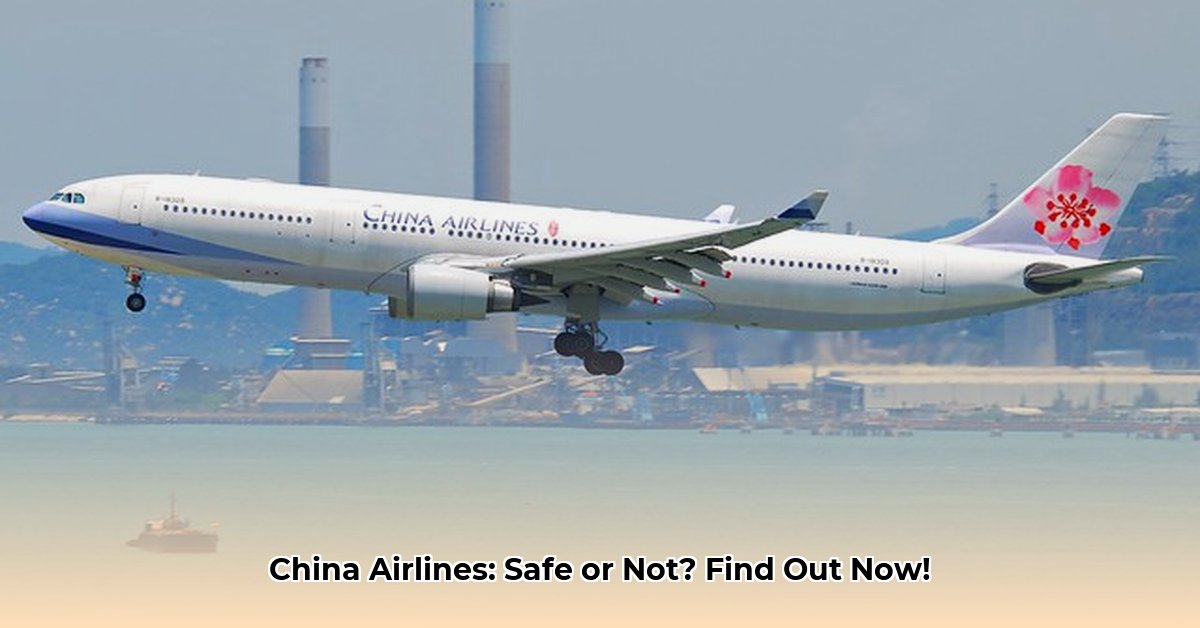
Understanding Airline Safety Ratings: A Multifaceted Assessment
Choosing an airline involves many factors, but safety is paramount. Determining the safety of an airline like China Airlines requires a nuanced approach, going beyond simple "safe" or "unsafe" labels. Airline safety ratings, while helpful, aren't a single, definitive metric. Organizations like AirlineRatings.com provide rankings, considering factors such as accident history, fleet age, pilot training, and maintenance practices. However, methodologies vary between rating systems, leading to discrepancies. For example, AirlineRatings.com emphasizes fleet age, while others may prioritize the frequency and severity of incidents. This complexity underscores the need for a thorough, multi-faceted assessment. How can we accurately compare these differing assessments? This is crucial for a sound understanding.
China Airlines and the Safety Picture: A Detailed Examination
This analysis focuses on China Airlines, evaluating its safety record using available data and considering the limitations of current rating systems. Does China Airlines meet international safety standards? The Federal Aviation Administration (FAA) approval suggests a positive assessment, indicating compliance with US safety regulations. However, FAA approval doesn't guarantee absolute safety. It’s a crucial factor, but not the sole determinant. Positive customer reviews suggest a generally positive passenger experience, but anecdotal evidence alone is insufficient for definitive conclusions. How does this compare to similar airlines? Analyzing this aspect adds another layer to the analysis.
China Airlines, like any airline, has experienced incidents throughout its history. A thorough investigation into these events is necessary to comprehend their causes, the airline's response, and resulting safety improvements implemented. It's essential to understand if these incidents indicate systemic issues or are isolated occurrences. Is the frequency of incidents consistent with industry averages? This quantitative analysis is vital. Moreover, the age of its fleet plays a part; newer planes generally incorporate enhanced safety technologies.
Here's a summary of key aspects:
| Factor | Assessment | Considerations |
|---|---|---|
| FAA Approval | Positive – Meets US safety standards | Significant positive indicator, but not a guarantee of absolute safety under all operational circumstances. |
| Customer Reviews | Mostly positive, but individual experiences vary | Subjective and dependent on individual experiences; not a reliable measure of overall safety. |
| Historical Incidents | Present, but frequency doesn't appear unusually high | Requires detailed analysis of each incident's cause, airline response, and resulting safety enhancements. |
Key Factors Influencing Airline Safety: A Global Perspective
Several factors contribute to an airline's safety profile, and these are often interconnected. A modern fleet, while advantageous, is ineffective without rigorous pilot training and consistent maintenance. What role does government oversight play? Stringent regulatory bodies are vital for ensuring compliance with safety standards and proactive risk management.
- Fleet Modernization: Newer aircraft often possess advanced safety features, enhancing overall safety.
- Pilot Proficiency: Highly trained and experienced pilots are essential for managing unforeseen events.
- Maintenance Regimen: Regular and thorough aircraft maintenance is paramount for operational safety.
- Safety Reporting Culture: Openly reporting incidents allows for improvements in safety practices.
- Regulatory Oversight: Robust governmental oversight ensures adherence to international standards.
It's important to consider that safety standards and regulatory frameworks vary across nations. An airline highly rated in one country might receive a different rating elsewhere due to these disparities. This does not necessarily mean one airline is inherently superior. Rather, it reflects these different regulatory environments.
Conclusion: A Balanced Perspective on China Airlines Safety
Based on current data, China Airlines appears to maintain a reasonable safety record, relative to its operational context and given the limitations of diverse rating systems. However, a definitive conclusion is challenging due to the inherent complexities of airline safety assessments. While the FAA approval and generally positive customer reviews suggest a positive safety profile, the presence of historical incidents requires careful examination. Analyzing these incidents, assessing the airline's responses, and evaluating ongoing safety improvements is essential.
This analysis highlights the importance of utilizing multiple data sources for a comprehensive assessment. Readers should conduct their own research, exploring various resources and regulatory information to form their conclusions. Remember, airline safety is a dynamic process, subject to ongoing improvements and adjustments.